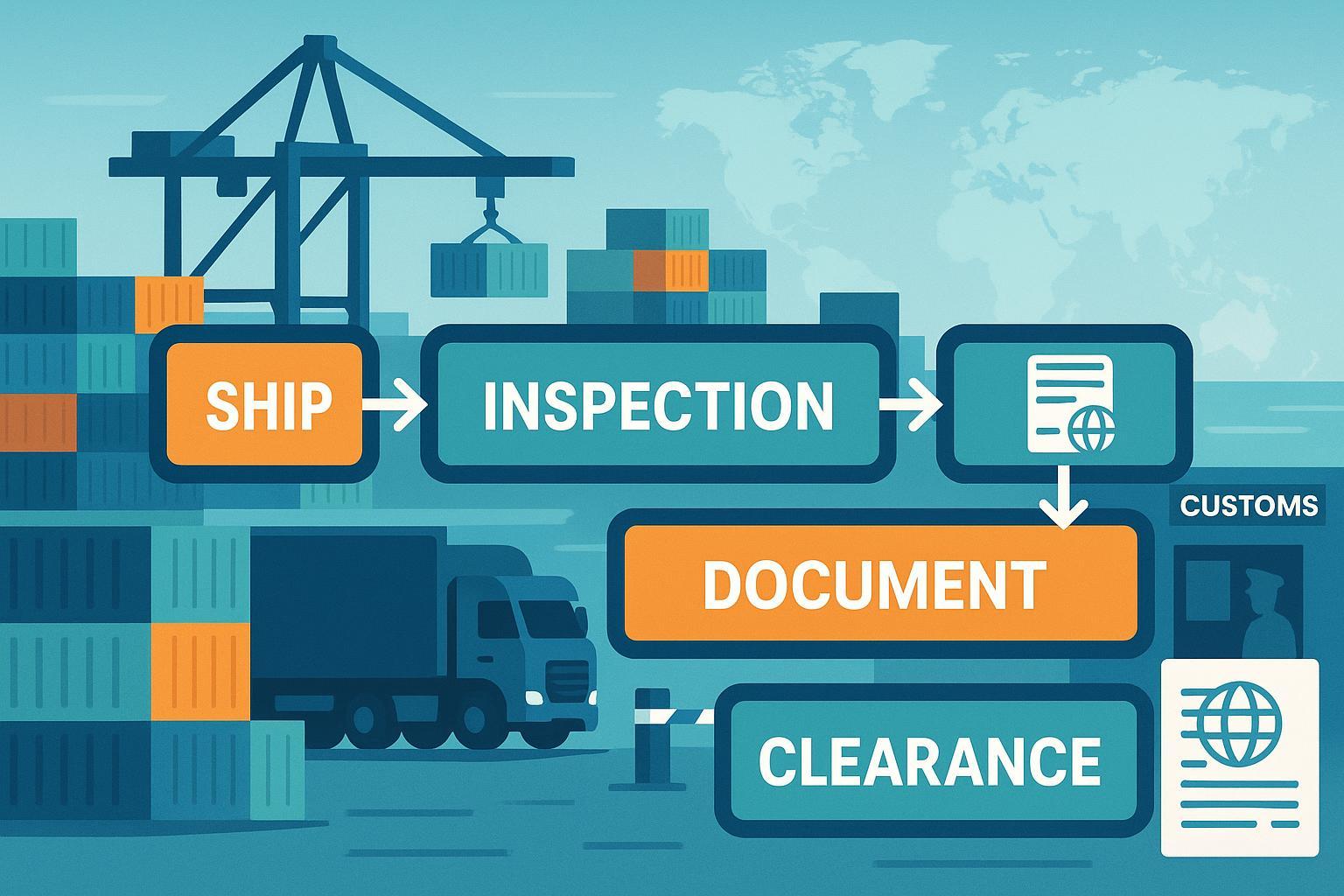How Long Does Customs Clearance Really Take? Definition, Process, and Business Tips

What Is Customs Clearance?
Customs clearance is the official process by which goods are allowed to enter or exit a country. It involves submitting required documents, paying duties and taxes, possible inspection of goods, and final approval from customs authorities. According to the World Trade Organization, it ensures legal and regulatory compliance for international trade.
Common Misconception: Customs clearance time is only one part of a shipment’s total transit time—other factors like port holding, inland transport, and last-mile delivery are separate.
Why Does Clearance Time Matter?
For eCommerce and international supply chains, customs clearance can be the gatekeeper to on-time delivery, cost control, and customer satisfaction. Delays can lead to:
- Inventory shortages
- Increased storage fees (demurrage)
- Missed product launches
- Penalties for non-compliance
The Customs Clearance Process: Step by Step
- Document Preparation: Commercial invoices, packing lists, import/export licenses, and HS codes.
- Submission & Declaration: Documentation is submitted (often via digital platforms) to the relevant customs authority.
- Assessment & Risk Analysis: Authorities assess documents and may use automated risk systems to flag shipments.
- Inspection (if flagged): Physical or document-based inspection for compliance or security checks.
- Duties & Taxes: Final calculation and payment of required customs fees.
- Release: Once all requirements are met, goods are cleared for delivery.
Typical Customs Clearance Times: Benchmarks
While times vary widely by country, product, and documentation quality, here’s a general guide:
| Scenario | Typical Timeframe |
|---|---|
| Fully documented, low-risk goods (US/EU ports) | 24–48 hours |
| Shipments with minor document issues | 2–4 days |
| Shipments flagged for in-depth inspection | 4–7 days (or more) |
| Perishables/medical (priority) | <12–24 hours |
| Emerging/developing markets (average) | 3–7 days |
Source: Synthesized from DHL, industry guidance, and logistics providers.
What Can Cause Delays?
- Incomplete or incorrect paperwork
- Missing or improper HS codes
- Random or targeted inspections
- Holidays or peak-season congestion
- Special permits (e.g., for food, chemicals)
- Lack of digital pre-clearance
Practical Example: The Real Impact
An eCommerce SME exports apparel from China to the EU. If HS codes are missing from the documentation, the shipment may be held for 2–3 extra days while corrections are submitted, causing stock-outs and possible demurrage fees.
How to Speed Up Customs Clearance: Business Checklist
- Double-check all documentation before shipping
- Use harmonized and accurate HS codes
- Work with experienced customs brokers or forwarders
- Leverage digital platforms or ERP systems for real-time status
- Upgrade to Authorized Economic Operator (AEO) or participate in trade facilitation schemes if eligible
- Submit documents in advance when possible
- Communicate proactively with logistics partners
Related Concepts
- Customs Declaration: The act of submitting required info to customs.
- Trade Compliance: Meeting all relevant trade laws and regulations.
- Demurrage: Fees for storage delays at ports.
- Logistics Coordination: Managing all moving parts of delivery.
Key Takeaway
Customs clearance times can range from under a day to over a week—most delays are preventable with proper preparation and digital tools. For reliable, efficient cross-border trade, treat customs clearance as a strategic business priority.